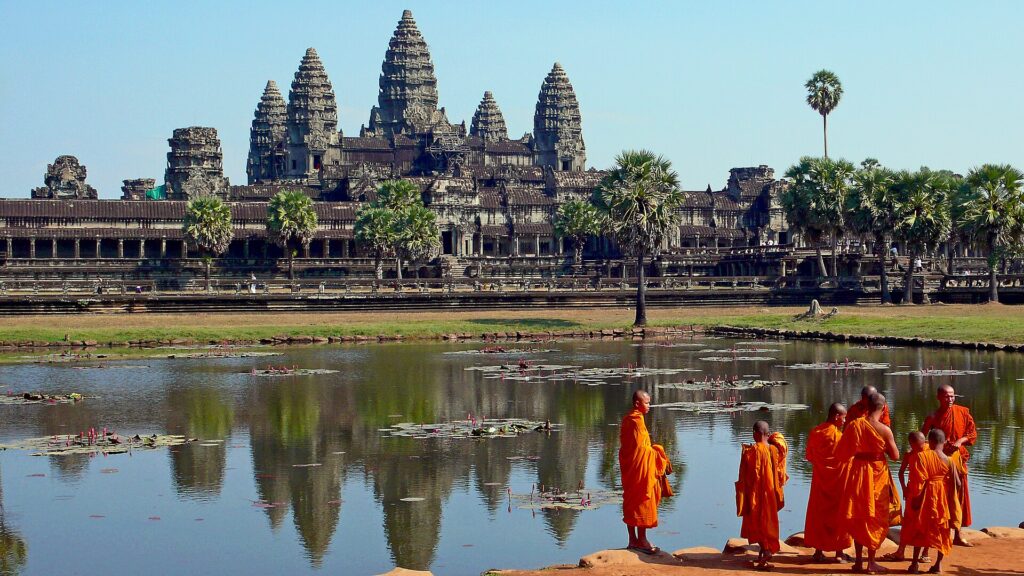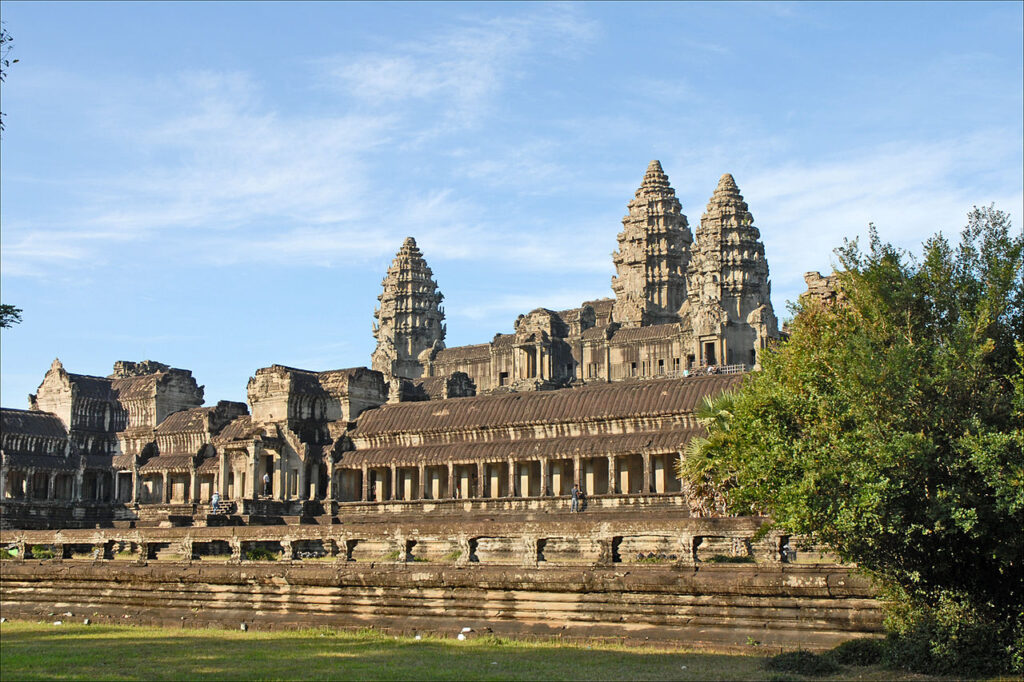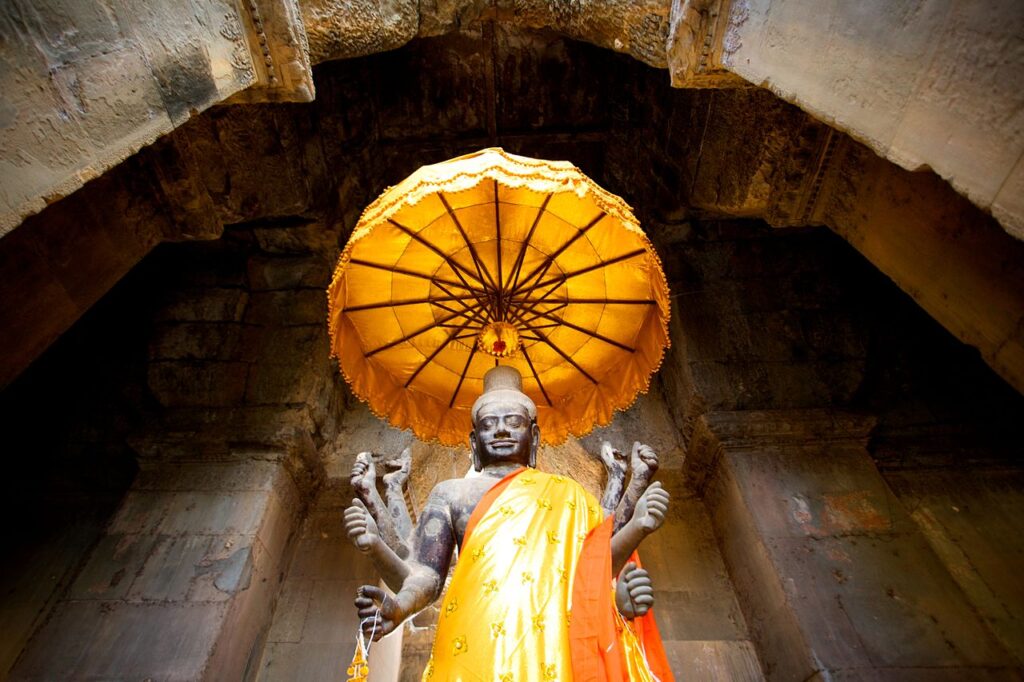Angkor Wat is a magnificent temple complex located in the Siem Reap province of Cambodia. It is the largest religious monument in the world and one of the most important archaeological sites in Southeast Asia. Built in the early 12th century by the Khmer King Suryavarman II as a Hindu temple dedicated to the god Vishnu, Angkor Wat later transformed into a Buddhist temple complex.

The name “Angkor Wat” translates to “City Temple” or “Temple City” in Khmer, reflecting its grandeur and scale. The temple complex covers an area of over 162 hectares (402 acres) and is surrounded by a vast moat, symbolizing the cosmic ocean. Its distinctive architectural style combines traditional Khmer design elements with intricate carvings, bas-reliefs, and elaborate towers, creating a breathtaking fusion of art, religion, and symbolism.

One of the most striking features of Angkor Wat is its central temple pyramid, rising to a height of over 65 meters (213 feet) above the surrounding landscape. The temple is surrounded by a series of concentric galleries, courtyards, and terraces, each adorned with intricately carved sandstone sculptures and bas-reliefs depicting scenes from Hindu mythology, historical events, and everyday life in ancient Cambodia.

The inner sanctum of Angkor Wat contains a central tower housing a sacred shrine dedicated to Vishnu, the preserver god of Hinduism. The temple complex also includes several smaller shrines, libraries, and pavilions, as well as a network of canals, reservoirs, and causeways that once served as vital infrastructure for the surrounding city.

Angkor Wat is not only a testament to the architectural and artistic achievements of the Khmer Empire but also a symbol of Cambodia’s cultural heritage and spiritual legacy. Despite facing centuries of neglect, invasion, and natural decay, the temple complex has remained a source of inspiration and wonder for visitors from around the world.

In 1992, Angkor Wat was designated a UNESCO World Heritage Site, recognizing its outstanding universal value and cultural significance. Since then, efforts have been made to preserve and protect the temple complex, including restoration projects, conservation initiatives, and tourism management plans aimed at ensuring its long-term sustainability.
Today, Angkor Wat continues to attract millions of visitors each year, drawn by its awe-inspiring beauty, historical significance, and spiritual resonance. Whether exploring its majestic halls and corridors, marveling at its intricate carvings and sculptures, or witnessing the sunrise over its iconic silhouette, visitors to Angkor Wat are treated to an unforgettable journey through the heart of ancient Cambodia’s rich and vibrant past.

